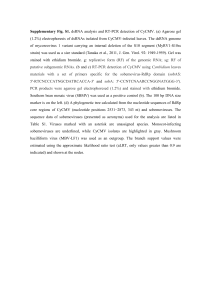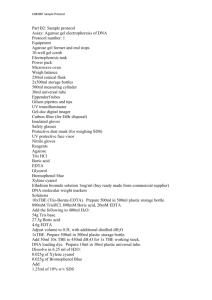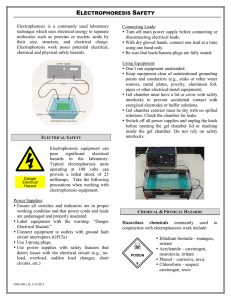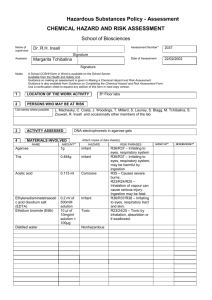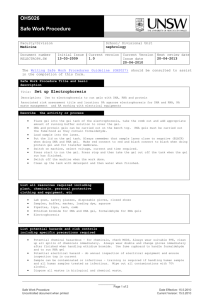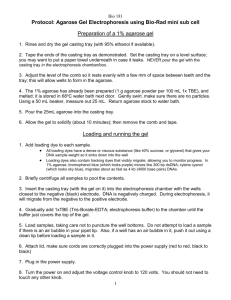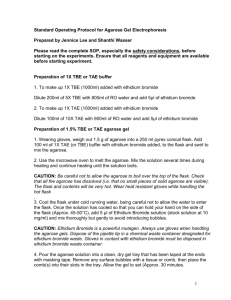Angela Binns
advertisement
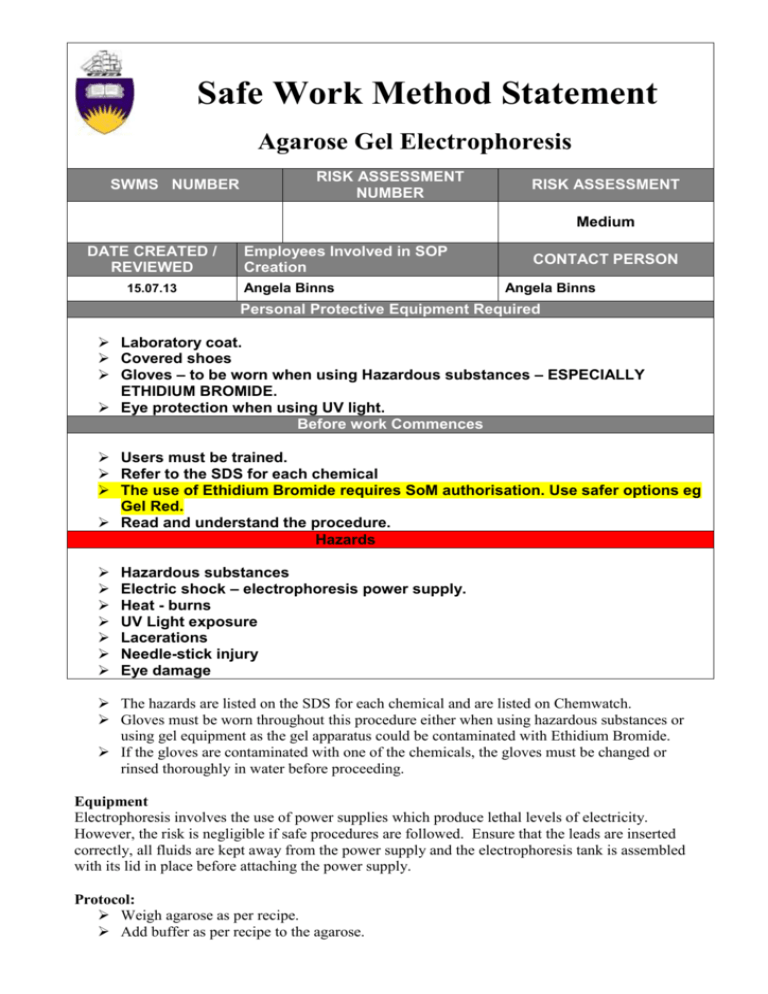
Safe Work Method Statement Agarose Gel Electrophoresis SWMS NUMBER RISK ASSESSMENT NUMBER RISK ASSESSMENT Medium DATE CREATED / REVIEWED 15.07.13 Employees Involved in SOP Creation Angela Binns CONTACT PERSON Angela Binns Personal Protective Equipment Required Laboratory coat. Covered shoes Gloves – to be worn when using Hazardous substances – ESPECIALLY ETHIDIUM BROMIDE. Eye protection when using UV light. Before work Commences Users must be trained. Refer to the SDS for each chemical The use of Ethidium Bromide requires SoM authorisation. Use safer options eg Gel Red. Read and understand the procedure. Hazards Hazardous substances Electric shock – electrophoresis power supply. Heat - burns UV Light exposure Lacerations Needle-stick injury Eye damage The hazards are listed on the SDS for each chemical and are listed on Chemwatch. Gloves must be worn throughout this procedure either when using hazardous substances or using gel equipment as the gel apparatus could be contaminated with Ethidium Bromide. If the gloves are contaminated with one of the chemicals, the gloves must be changed or rinsed thoroughly in water before proceeding. Equipment Electrophoresis involves the use of power supplies which produce lethal levels of electricity. However, the risk is negligible if safe procedures are followed. Ensure that the leads are inserted correctly, all fluids are kept away from the power supply and the electrophoresis tank is assembled with its lid in place before attaching the power supply. Protocol: Weigh agarose as per recipe. Add buffer as per recipe to the agarose. Cover the flask beaker opening Heat using a microwave until all of the agarose has dissolved. Using heat proof gloves remove from microwave oven. Gently swirl to ensure even mixing Allow to cool to approx. 500C. If Ethidium Bromide is being added to the gel at this stage WEAR GLOVES Prepare gel assembly unit with combs and “end dam walls” Pour gel into assembly unit ( Use heat proof gloves if hot) Allow to set. Load gel using plastic micropipette tips Check the gel apparatus for breakages or lead damage. (Call Biomedical Engineering for all repairs extn 64052) Place the gel into the gel tank with buffer added. DO NOT ALLOW CONTACT BETWEEN BUFFER AND Connectors. Place lid on the top of the tank
